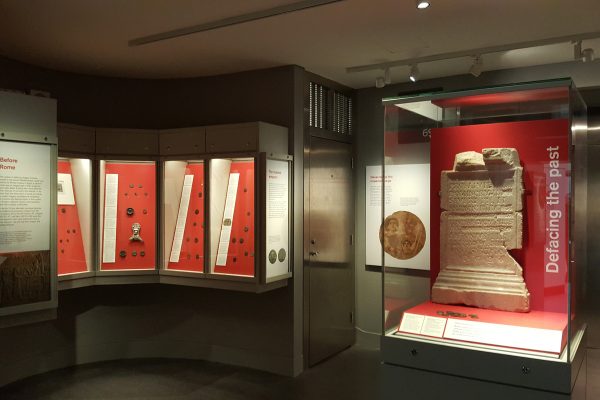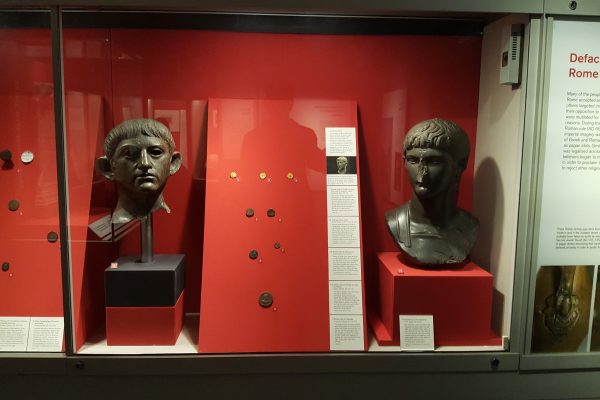Modern collectors may prize perfect specimens of Roman coins, but ancient Roman rulers were keener on defacing them.
In an empire built more often on treachery, controlling the image of the current Emperor was as important as defacing the image of the predecessor. The memory of Roman emperors and high-ranking officials could be officially condemned after their death through a process known as ‘damnatio memoriae’, meaning that a person’s memory was attacked and largely erased. This was particularly true if rulers were overthrown or executed.
A small display in the British Museum looks at these defaced coins, and statues and reveals what they tell us about the turmoil in the upper circles of Roman life.
Sometimes, coins were simply filed down to remove the errant figures. But some could be worse — a brass sestertius of the Emperor, Maximinus Thrax was reworked to show his head on a spike, with a bird pecking out his eyes, which is roughly how he died when soldiers rebelled against him.
Not just coins, but stone tablets could be defaced — here a line including a tribute to the wife of the Roman emperor, Caracalla was removed after she was killed on the orders of the Emperor.
A bust of Germanicus was defaced, not by fellow Romans, but by later Christians, who apart from chopping off noses and ears, tended to carve crosses into their foreheads in what was thought to be a form of exorcism.
From Sejanus in the rule of Tiberius to the decadent Caligula and Nero, and from the disastrous Domitian and Commodus to the soldier emperors of the later empire, see Roman history from the view of the defacer.
The exhibition (in room 69a) is free and open until 7th May 2017.









